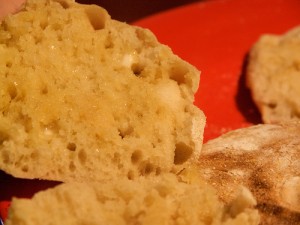By Beth Dunn (Guest Contributor)
 Were George Handel and a buttered muffin inadvertently responsible for the creation of the British Museum?
Were George Handel and a buttered muffin inadvertently responsible for the creation of the British Museum?
Well, probably not.
But honestly? I wouldn’t rule it out, either.
So you know the British Museum. First public secular museum, established in 1753 when Sir Hans Sloane passed away and left his absurdly large and varied collection of rare books, antiquities, and just downright oddities to the British Crown.
Sloane was a wildly successful London doctor, one who counted Samuel Pepys and Queen Anne among his patients, and who had amassed a cabinet of curiosities so large that he had to buy the house next door just to give him enough shelf space for it all.
Distinguished visitors would come from all over to peer at his whatnots, to marvel at his whoosits.
Then he passed away and left it all to the nation, who responded with characteristic ingratitude, a great deal of Parliamentary wrangling, and no small amount political corruption that eventually resulted in the creation of the British Museum.
What’s odd about this story is that it is hardly possible to research the early days of the British Museum without coming across the following story with what one can’t help but notice is alarming frequency:
Sloane’s house was visited by numerous people. Among them was the composer Handel, who is said to have outraged his host by placing a buttered muffin on one of his rare books.
For the life of me, I cannot stop thinking about that damn buttered muffin.
What kind of muffin was it? Was it more extravagantly buttered than most? Exactly what sort of baked good was called a muffin back in the 18th century, anyway?
Was Handel some sort of countrified rube, who simply thought that rare books made excellent substitutes for plates and saucers, or was he trying to make some kind of point? What book was it?
Was it this near catastrophe that convinced Sloane that his collection needed the protection of the British Crown, once he himself was no longer around to protect his books from the menace of butter-laden muffins, crumpets, and scones?
Even more intriguingly, is there in some dim and dusty corner of the British Library (where all the books of the British Museum eventually found a home) an old, rare book with one very faded, but barely discernable circular grease stain on it?
These are the sorts of questions that leads one to investigate, late at night and into the early morning hours, the history of the English Muffin, and to discover (to one’s great delight) that the muffin was in fact a highly fashionable foodstuff in the 18th century.
Which would explain why it was being served to distinguished visitors to what one has to assume was one of the more exclusive drawing rooms in London at the time.
Muffins were huge. They were a tremendous fad, catching on among the snacking classes with such fervor that scores of muffin factories soon popped up all over London. Jane Austen even mentioned muffins in her novel Persuasion, and not merely as a particularly apt way of describing the hot, buttery Captain Wentworth.
Did Sloane realize the peril his collection might be in, if left open to the slings and arrows of outrageous baked goods?
Or was Handel just a bit of a jerk?
Hard to say.
But in the midst of this deeply appealing line of research, I suddenly remembered another buttered muffin story, this time about one of the American founding families. I got very excited for a few minutes, imagining that the tale of the buttered muffin was some sort of universal flood story, found in one form or another in all known cultures, varying only in the shape and size of the muffin, or in the amount of butter involved.
Alas, it was a more prosaic tale that that. Something about a young lad who was named after Benjamin Franklin, and who took it upon himself to instruct First Lady Dolley Madison in the art of properly buttering your muffin. If you’ll excuse the expression.
‘Why, you must tear him open, and put butter inside and stick holes in his back! And then pat him and squeeze him and the juice will run out!’
Which seems a very sensible way to eat a buttered muffin, if you ask me.
What’s truly excellent about this story is that it is a reminiscence of Thomas Jefferson’s great-granddaughter, Ellen Wayles Harrison. And that the story took place at Monticello.
Buttered muffins. Present at the creation of so many great things.
Perhaps now you, like me, wish to know just how Thomas Jefferson ate his muffins.
Very well, I shall tell you.
To a quart of flour put two table spoonsfull of yeast. Mix . . . the flour up with water so thin that the dough will stick to the table. Our cook takes it up and throws it down until it will no longer stick [to the table?] she puts it to rise until morning. In the morning she works the dough over . . . the first thing and makes it into little cakes like biscuit and sets them aside until it is time to back them. You know muffins are backed in a gridle [before?] in the [fire?] hearth of the stove not inside. They bake very quickly. The second plate full is put on the fire when breakfast is sent in and they are ready by the time the first are eaten.
Who’s hungry?
Beth Dunn is a novelist, blogger, and geek. She writes at An Accomplished Young Lady, and gets pretty worked up sometimes about baked goods.
Image by foonus
This post was first published on Wonders & Marvels in January 2012.
